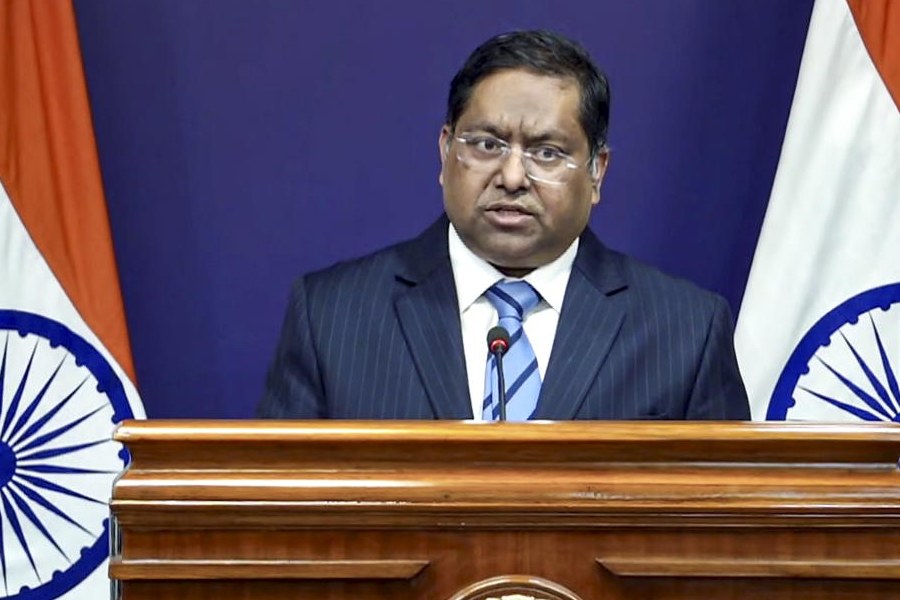 |
 |
 |
| HOUSE THAT: (From top) The recently-built dental college in Jamia Milia Islamia University; the newly-renovated Jaipur House in Doon School and the semi open-air cafetaria in Jamia |
The gigantic crane stands out like a sore thumb on the lush green campus of Doon School. The sylvan surroundings and the red brick structure that houses India’s most famous public school emanate a sense of timelessness. The frantic construction, on the other hand, is a sign of things to come. The Dehra Dun school is gearing up to reopen in the first week of August with more than just a nip-and-tuck job.
The Jamia Milia Islamia University in Delhi has already reinvented itself. The sprawling campus has given way to a host of new buildings. University canteens are usually bare rooms with laminated tables and chairs. The new students’ haunt in Jamia, however, is a semi open-air cafeteria made out of steel. The campus boasts of manicured lawns, a state-of-the-art dental college and a modern art gallery.
These days, public schools and universities are in the news not just for academics but for the buildings that house them. Old matchbox-style edifices are giving way to new styles. Institutes are on a redesign drive — and many are opting for what is being described as a “signature” campus.
And it’s not just a job done anyhow by local engineering authorities. Well-known architects and artists are being hired for the new designs. The Jamia campus, for instance, has been revamped by designers Romi Khosla and A.G.K. Menon. “We needed architects who were familiar with our Islamic architecture. Khosla and Menon are the best in the industry. The brief given to them was to marry Islamic architecture with modern values,” says Jamia vice-chancellor Mushirul Hasan.
Doon School has set up an Architectural Projects Committee, headed by architect and old boy Rohit Handa, to deal with the major work that the school is undertaking. Artist Paramjit Singh is slated to design a part of the landscape of Doon School, though the work is still to begin, while Bangalore-based Sandeep Khosla and Delhi-based Neeraj Manchanda are the architects for the new buildings in Doon.
Suddenly, academics whose links with buildings were confined to class rooms and science laboratories are talking about natural light and open spaces. “I feel proud when people say that Jamia now looks like an international university,” says Hasan.
An extensive rebuilding exercise is ushering in change in educational institutions. At Woodstock School in Mussoorie, student residences are being expanded, while the library and gymnasium have been upgraded. Landscape artistes have been moulding the open space. Rishi Valley School in Andhra Pradesh is focusing on conserving ecology and upgrading facilities while the Scindia School, Gwalior, is planning to set up a shooting range and a golf course. Lawrence School, Sanawar, Himachal Pradesh, now boasts of a new modern solar power-heated indoor swimming pool, an indoor sports complex and a modern squash court.
A building, says Sandeep Khosla, has to send out a loud message. “It reflects the authority of an institution, the values that it stands for and the purpose of the place,” says Khosla, who is designing Doon’s arts school. The centre promises to blend the renaissance-inspired building with a retro look and will have a “playful” touch when it’s done. “It will reflect the creative journey without hampering the aesthetics of the place,” says Khosla.
Though this is not the first time that top architects are being hired for educational institutes, there is a difference. When American architect Louis Kahn was commissioned to design the Indian Institute of Management, Ahmedabad, in the 1950s, it was seen as a part of a larger nation-building project. Today, the angle of vision has shifted — it is competition that is driving the image-building exercises of educational institutions.
Doon School, for instance, finds the need to point out that it is a “world-class institution with world-class buildings.” Officiating headmaster Philip Burrett says: “I am not worried about air-conditioned schools offering a Hyatt menu in their dining halls. But yes, I feel competition is to come from foreign institutions.”
That’s not surprising for education is big business. According to a research report published last year by Delhi-based market research and information analysis company RNCOS, private spending on education is expected to increase by between 13 per cent and 15 per cent in the next four to five years. It is estimated that by 2011-2012, it will surpass Rs 100,000 crore from Rs 26,883 crore in 2000-2001.
Fancy new educational institutes are coming up — giving the old and established ones a run for their money. Among them is the Assam Valley School in Sontipur district, designed by Romi Khosla. Pathways World School in Gurgaon and private universities with foreign collaboration are offering state-of-the-art campuses in the metros. “Forward-looking institutions would like to get an image makeover while conservative campuses would stick to restoring their old buildings,” says Romi Khosla.
Educational institutes are not just changing their looks for the heck of it — some are making a statement. Jamia is a case in point. When the university went for a major overhaul, the idea was not just to beautify the campus. The reason, says Hasan, was the need to change the mindset of people. “Today, this is a composite campus with modern amenities where boys and girls can move freely,” he says.
The campus is dotted with centres such as the Café Castro, the M.F. Husain Art Gallery, the Nelson Mandela House and the Ho Chi Minh seminar hall. “We have embraced contemporary ways without changing our tradition,” says Rakshanda Jalil, director, media and culture, Jamia.
Burrett stresses that Doon too has kept the balance between the old and the new. “It’s important to hold on to your traditions yet keep up with changing times,” he says. The school campus reflects the sentiment — the green foliage on the main, colonial building matches the pristine white façade of a freshly restored structure. New buildings on the campus include an art gallery and teachers’ and boys’ hostels.
Other institutes too are celebrating their new looks. The National School of Drama has put architect K.T. Ravindran in charge of its overhaul. In 2005, Delhi-based architect Pradeep Sachdeva was commissioned by Delhi University to decongest the area around the campus. Sachdeva has unclogged an area called the Vivekananda Square by making space for pedestrians. Sculptures have been put up around the campus and a botanical garden has come up.
The signature campuses seek to strike the perfect balance between the buildings and the surroundings. Authorities at Doon School, which is spread over 70 acres and has about 440 students, are clearly careful about not marring its natural beauty as it goes in for new construction. “The institution has to look beautiful with lots of green areas, and at the same time have a modern sports complex,” says former Doon School headmaster Gulab Ramchandani, who now runs the Ramchandani Education Consultants in Dehra Dun and has executed several “high end” school projects.
Of course, not all architects believe that educational institutes have to be built on sprawling campuses. “India’s academia has made a bad choice,” says Romi Khosla. Boarding schools can manage large spaces, but universities, he stresses, do not have the resources to sustain vast acres.
The projects also cost large amounts of money. While universities fund their projects using grants allotted to them, schools have to tap their alumni for resources. Jamia’s new dental college — a building that reflects natural light — was built at a cost of Rs 40 crore, while its library cost another Rs 34 crore. At Doon School, Rs 15 crore has already been spent on various projects, while Woodstock has used up close to Rs 20 crore on several building projects.
Yet, for Brand Education, the four walls are as important as all that happens within. Architect Manchanda puts it well. “A bad institution in a fancy building will not sell. Neither will a good institution like to house itself in a boring grey building.”










